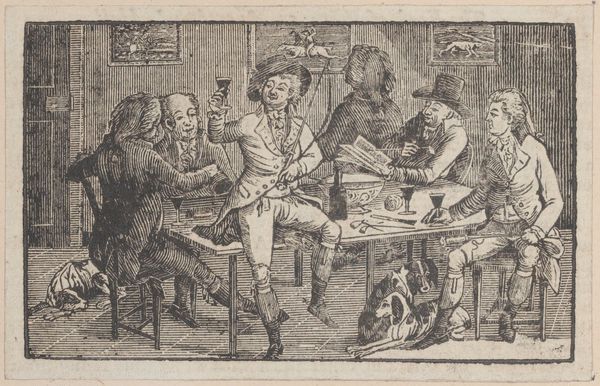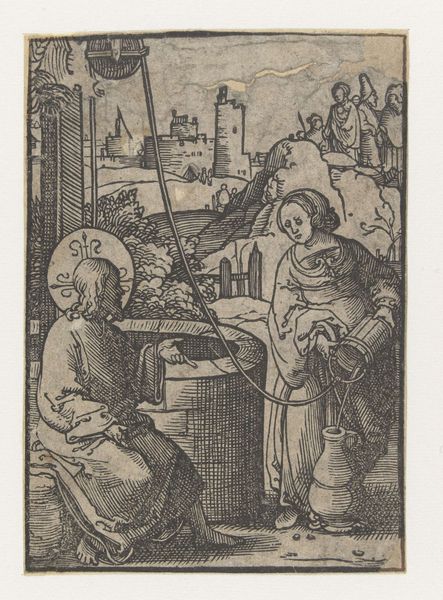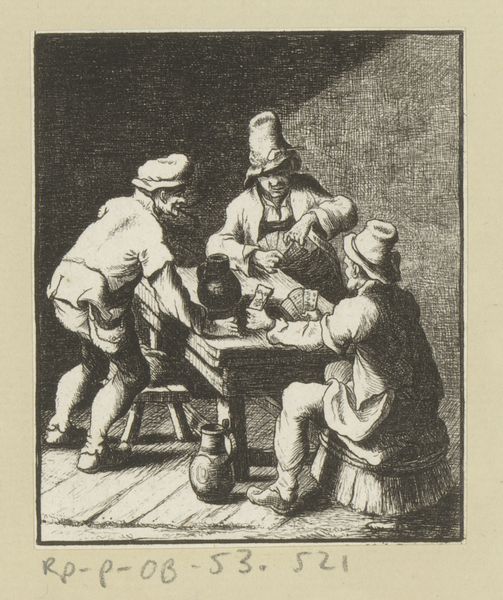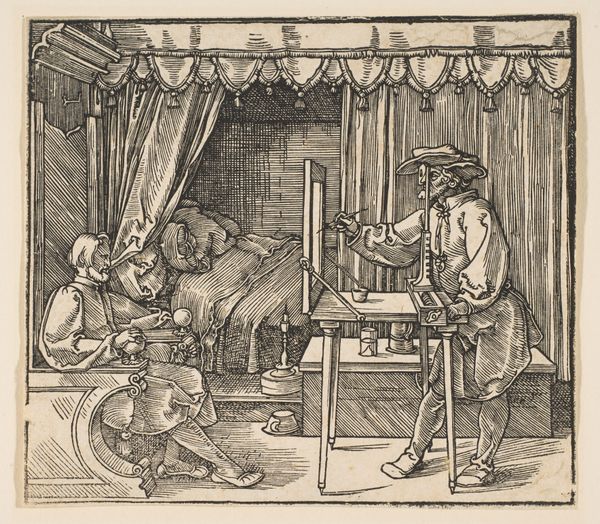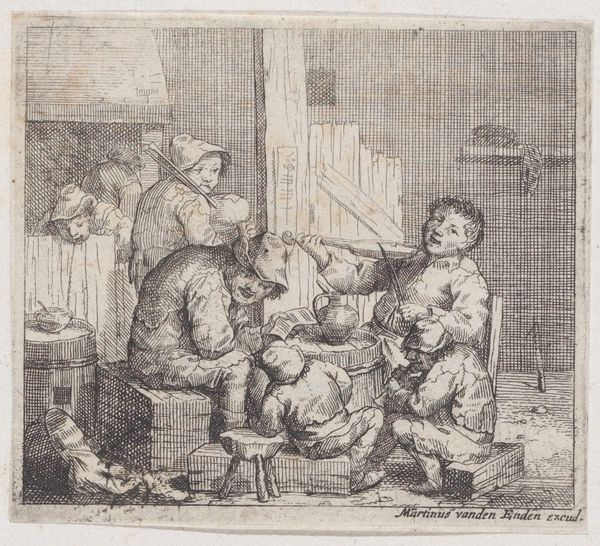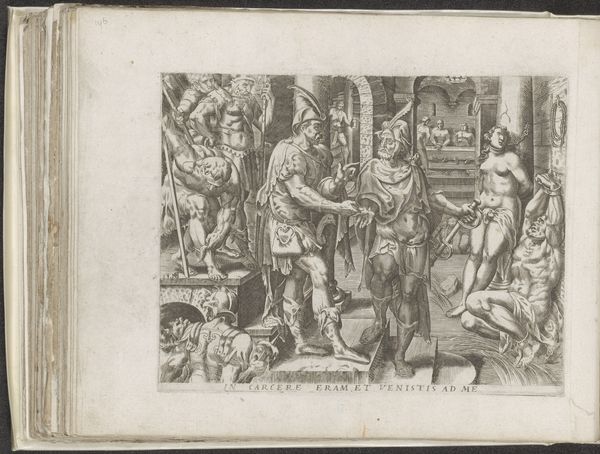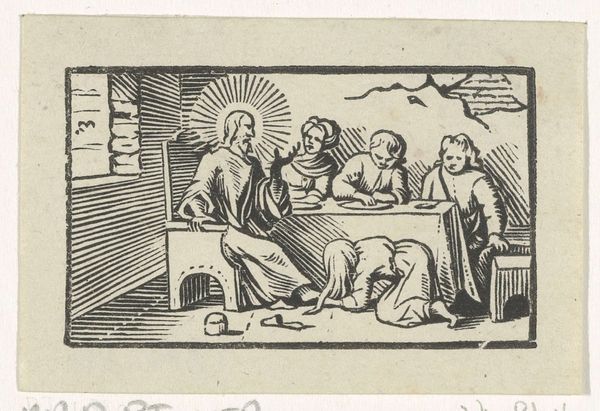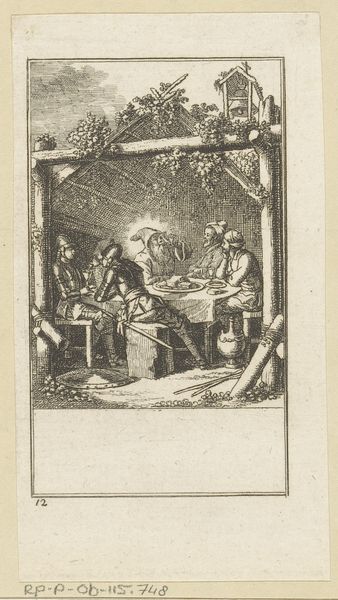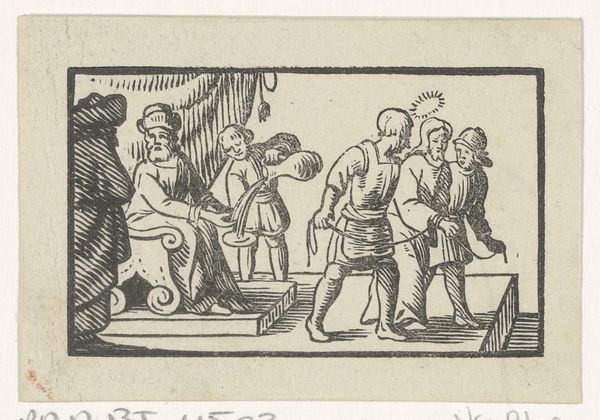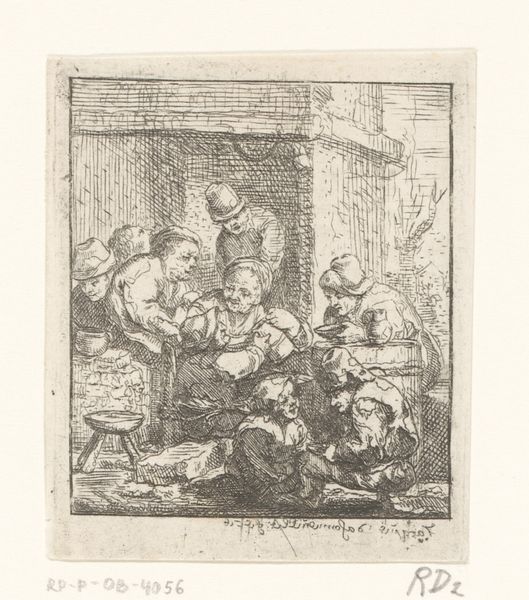
drawing, print, intaglio, paper, ink, woodcut
#
drawing
#
narrative-art
# print
#
intaglio
#
figuration
#
paper
#
ink
#
woodcut
#
history-painting
Dimensions: height 43 mm, width 63 mm
Copyright: Rijks Museum: Open Domain
Dirck de Bray created this woodcut, "The Nativity," in the Dutch Republic during the second half of the 17th century. The image depicts the newborn Christ child lying in a manger, surrounded by Mary, Joseph, and shepherds. De Bray’s choice of a humble stable setting is a visual reference to the core Christian idea of the divine entering the world in the most modest of circumstances. In the newly protestant Dutch Republic, the simple woodcut medium also speaks to the reformed values of modesty and humility over the overt display of wealth that characterized the Catholic church. It could also be seen to reflect the new Republic itself, formed through revolt against the Catholic Spanish empire. To fully understand this work, scholars examine the religious, political, and economic conditions of the 17th-century Dutch Republic, using historical documents and theological writings. Doing so allows us to interpret this small woodcut not just as a religious scene, but as a product of its unique time and place.
Comments
No comments
Be the first to comment and join the conversation on the ultimate creative platform.
